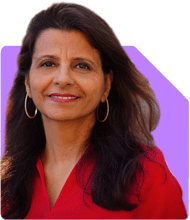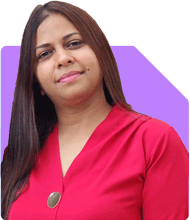46-Year-Old Wife Diagnosed with Fibroids, Kidney Stones and Fatty Liver: Diet and Lifestyle Advice?
Komal Jethmalani | Answer |Ask -Follow
Dietician, Diabetes Expert - Answered on Oct 16, 2024
She specialises in weight loss and diabetes management.
Jethmalani has completed her MSc in food and nutrition from SNDT University and trained at Jaslok Hospital.
She is a NDEP-certified diabetes educator.... more

Hi Komal, My wife aged 46 years old got her USG abdomen and pelvis done yesterday. Following is the summary of her reports: 1]Enlarged bulky uterus with multiple uterine fibroids. 2] Right renal calculus 7 x 5 mm in lower calyx 3] Grade 1 fatty lever. Kindly suggest diet and lifestyle changes for her.
You may like to see similar questions and answers below
Komal Jethmalani | Answer |Ask -Follow
Dietician, Diabetes Expert - Answered on Feb 18, 2023
Dr Natasha Kumrah | Answer |Ask -Follow
GP, Diabetologist, Gastroenterologist - Answered on Apr 11, 2023
Nidhi Gupta | Answer |Ask -Follow
Physiotherapist - Answered on May 17, 2024
Dr Chandrakant Lahariya | Answer |Ask -Follow
Diabetologist, Consultant Physician, Vaccine Expert - Answered on Oct 29, 2024
Ramalingam Kalirajan |10893 Answers |Ask -Follow
Mutual Funds, Financial Planning Expert - Answered on Dec 15, 2025
Ramalingam Kalirajan |10893 Answers |Ask -Follow
Mutual Funds, Financial Planning Expert - Answered on Dec 15, 2025
Radheshyam Zanwar |6746 Answers |Ask -Follow
MHT-CET, IIT-JEE, NEET-UG Expert - Answered on Dec 15, 2025
Ramalingam Kalirajan |10893 Answers |Ask -Follow
Mutual Funds, Financial Planning Expert - Answered on Dec 15, 2025
Ramalingam Kalirajan |10893 Answers |Ask -Follow
Mutual Funds, Financial Planning Expert - Answered on Dec 15, 2025
Ramalingam Kalirajan |10893 Answers |Ask -Follow
Mutual Funds, Financial Planning Expert - Answered on Dec 15, 2025
Samraat Jadhav |2508 Answers |Ask -Follow
Stock Market Expert - Answered on Dec 15, 2025
Ramalingam Kalirajan |10893 Answers |Ask -Follow
Mutual Funds, Financial Planning Expert - Answered on Dec 15, 2025
Reetika Sharma |425 Answers |Ask -Follow
Financial Planner, MF and Insurance Expert - Answered on Dec 15, 2025
Radheshyam Zanwar |6746 Answers |Ask -Follow
MHT-CET, IIT-JEE, NEET-UG Expert - Answered on Dec 15, 2025




























